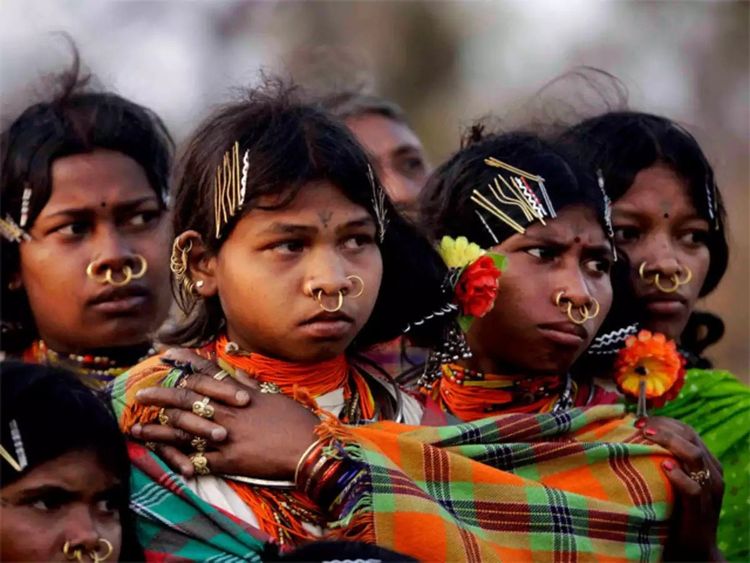For smooth Ad free experience
For smooth Ad free experience
Their cultures were different, their religion was unique, their food was extraordinary, and their clothes were outlandish. The Gonds formed a community that was not only tightly knit but far from the quotidian life. A community that has tales to tell, and legends to showcase, let’s explore their uniqueness with an open heart and mind.

Tribes of India: Gonds (Part 2)
One can find the first reference to the Gonds in the books written by 14th-century Muslim writers. Between the 13th and 16th centuries, Gonds governed a territory known as Gondwana, which stretched from eastern Madhya Pradesh to western Odisha, and from northern Andhra Pradesh to the southeastern tip of Uttar Pradesh. Their suzerainty continued till the 1740s, and they ruled over most parts of India and were feared by all. But with the inception of Maratha rule in 1740, the Gond rajas were overthrown from their position of authority, and all territories were seized. Their status was reduced to that of enslaved people, and they were no longer Gond zamindars in the state.
Today, the Gonds are considered a Dravidian ethnolinguistic group and perhaps the most significant tribal group in India. The Gond community has been designated a Scheduled Tribe for reservation purposes in many states, including Madhya Pradesh, Maharashtra, Chhattisgarh, Uttar Pradesh, Telangana, Andhra Pradesh, Bihar, and Odisha.
Along with their detailed history of origin, their name, too, has various roots. Some sources say that their name has been derived from the word 'konda', meaning hill, and it is pretty similar to the Khonds of Odisha. The Gonds also called themselves 'Koitur', a name that sounds quite familiar to 'Kui', a self-designated name of the Khonds.
Several folk stories revolve around the Gond people, which are told by ancestral troubadours and professional storytellers known as Pardhans. These tales bring us closer to multiple aspects of the Gond community, including their religion, living conditions, family life, clothing, food, and cultural heritage.
Like many other tribes, Gonds revere Baradeo, also known as Bhagavan, Sri Shambu Mahadeo, and Persa Pen. Baradeo is in charge of overseeing the actions of lesser gods. He is revered, but he does not get the intense devotion that clan deities do. Each Gond clan has a Baradeo who looks out for all clan members. The Baradeo is fundamentally excellent, yet it can also be harmful and violent. Many Gonds believe that when a Pardhan (bard) performs his violin, the fierce forces of the deity are restrained. Each village has its own Village-Guardian and Village-Mother, who is worshipped at the residents' yearly festivals. Gonds also worship family and home gods, field gods, and cow gods. Shitala Mata, the goddess of smallpox, aids in illness prevention. Spirits also haunt hills, rivers, lakes, and forests.
Gonds guard pregnant women from curses and evil forces, and they execute several rites once the child is delivered. The dead of the Gonds is either cremated or buried. Children, unmarried people, and those who die in an unlucky way are buried without much fanfare. According to the Gonds, humans have a life force and a spirit. The life energy is reborn into some other earthly existence following death, while the spirit stays in a different realm. Death rites are performed by Gonds to assist the spirit's transition into the other world and to smooth its reception by other clan spirits. This rite, known as 'karun', must be performed to satisfy a responsibility owed to the departed. Memorial pillars pay tribute to the departed soul. Gonds believe ancestor spirits keep an eye on the living and punish sinners.
In Gondi, society is split into four sections known as phratries or sagas. Each myth was derived from one of four groups of kings that escaped from the cave after being liberated by the hero Lingo. Throughout the novel, there are numerous clans (pairs).
One of the most intriguing aspects of the Gond tribe is their clothes and diet. Gond men often wear the dhoti or loincloth. A dhoti is a long white cotton fabric piece wrapped around the waist, slid between the legs, and tucked into the abdomen. Women wear a cotton sari (a piece of cloth tied all around the waist with one end hanging over the right shoulder) and choli (tight-fitting, cropped blouse).
Unique food items make the tribes different from one another and so is the Gond cuisine. The Gond cuisine is based on two millets called 'kodo' and 'kutki'. These are boiled to make soup or dried to make cereal. The broth is preferred for the first two servings of the day, and dry cereal is consumed at night, frequently with vegetables. Vegetables are produced in gardens or foraged from woodlands and root and tuber crops. Forests are also used to collect honey.
Rice is a luxury commodity enjoyed by Gonds at feasts and festivities. Meat is popular with most Gonds. Creatures slaughtered during rituals are enthusiastically devoured, and forest animals complement the diet. Gonds must refrain from eating the meat of their clan's totem animals. Gonds cultivate tobacco for smoking and produce liquor from the mahua tree for festivals. Now that we came to know about the traditions, food and clothing habits of this indigenous tribe, in the next part we would explore an interesting tale that traces the lineage of one of the most famous Gond recipes called 'mahua'. We would also explore some unique religious practices that have the ability to fascinate and intrigue us. So, stay tuned!
0
You might be interested in reading more from
